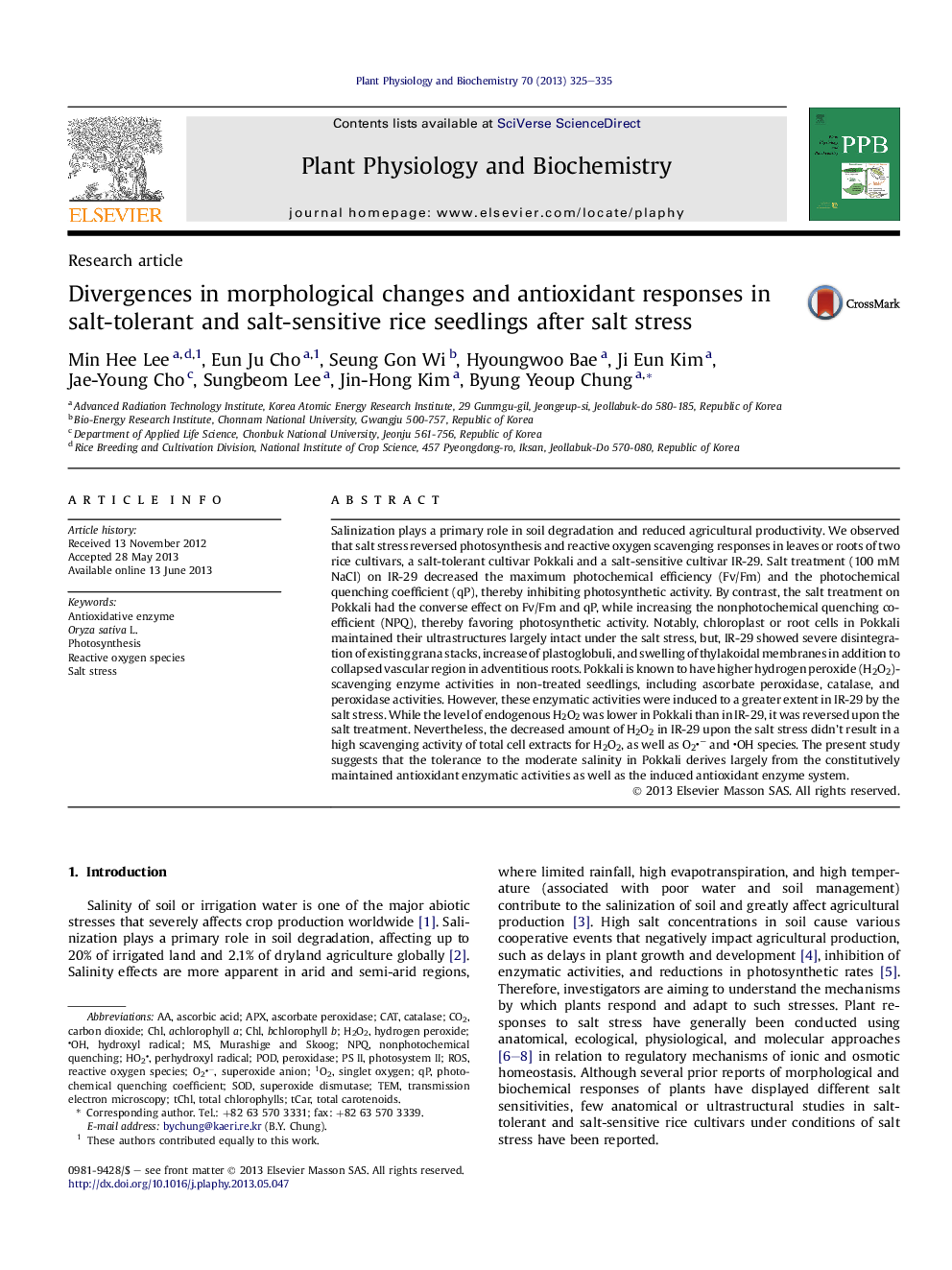| Article ID | Journal | Published Year | Pages | File Type |
|---|---|---|---|---|
| 8355659 | Plant Physiology and Biochemistry | 2013 | 11 Pages |
Abstract
Salinization plays a primary role in soil degradation and reduced agricultural productivity. We observed that salt stress reversed photosynthesis and reactive oxygen scavenging responses in leaves or roots of two rice cultivars, a salt-tolerant cultivar Pokkali and a salt-sensitive cultivar IR-29. Salt treatment (100Â mM NaCl) on IR-29 decreased the maximum photochemical efficiency (Fv/Fm) and the photochemical quenching coefficient (qP), thereby inhibiting photosynthetic activity. By contrast, the salt treatment on Pokkali had the converse effect on Fv/Fm and qP, while increasing the nonphotochemical quenching coefficient (NPQ), thereby favoring photosynthetic activity. Notably, chloroplast or root cells in Pokkali maintained their ultrastructures largely intact under the salt stress, but, IR-29 showed severe disintegration of existing grana stacks, increase of plastoglobuli, and swelling of thylakoidal membranes in addition to collapsed vascular region in adventitious roots. Pokkali is known to have higher hydrogen peroxide (H2O2)-scavenging enzyme activities in non-treated seedlings, including ascorbate peroxidase, catalase, and peroxidase activities. However, these enzymatic activities were induced to a greater extent in IR-29 by the salt stress. While the level of endogenous H2O2 was lower in Pokkali than in IR-29, it was reversed upon the salt treatment. Nevertheless, the decreased amount of H2O2 in IR-29 upon the salt stress didn't result in a high scavenging activity of total cell extracts for H2O2, as well as O2â and OH species. The present study suggests that the tolerance to the moderate salinity in Pokkali derives largely from the constitutively maintained antioxidant enzymatic activities as well as the induced antioxidant enzyme system.
Keywords
NPQTChlChlOryza sativa L.APXCAT1O2PODTCARHO2Murashige and SkoogO2−ROSHydrogen peroxideAscorbic acidAntioxidative enzymesuperoxide anionSinglet oxygenTemSalt stressNonphotochemical quenchingCarbon dioxideHydroxyl radicalSODSuperoxide dismutasephotochemical quenching coefficientPhotosynthesisPhotosystem IITransmission electron microscopyH2O2Peroxidaseascorbate peroxidaseCatalaseCO2Total carotenoidsReactive oxygen species
Related Topics
Life Sciences
Agricultural and Biological Sciences
Plant Science
Authors
Min Hee Lee, Eun Ju Cho, Seung Gon Wi, Hyoungwoo Bae, Ji Eun Kim, Jae-Young Cho, Sungbeom Lee, Jin-Hong Kim, Byung Yeoup Chung,
